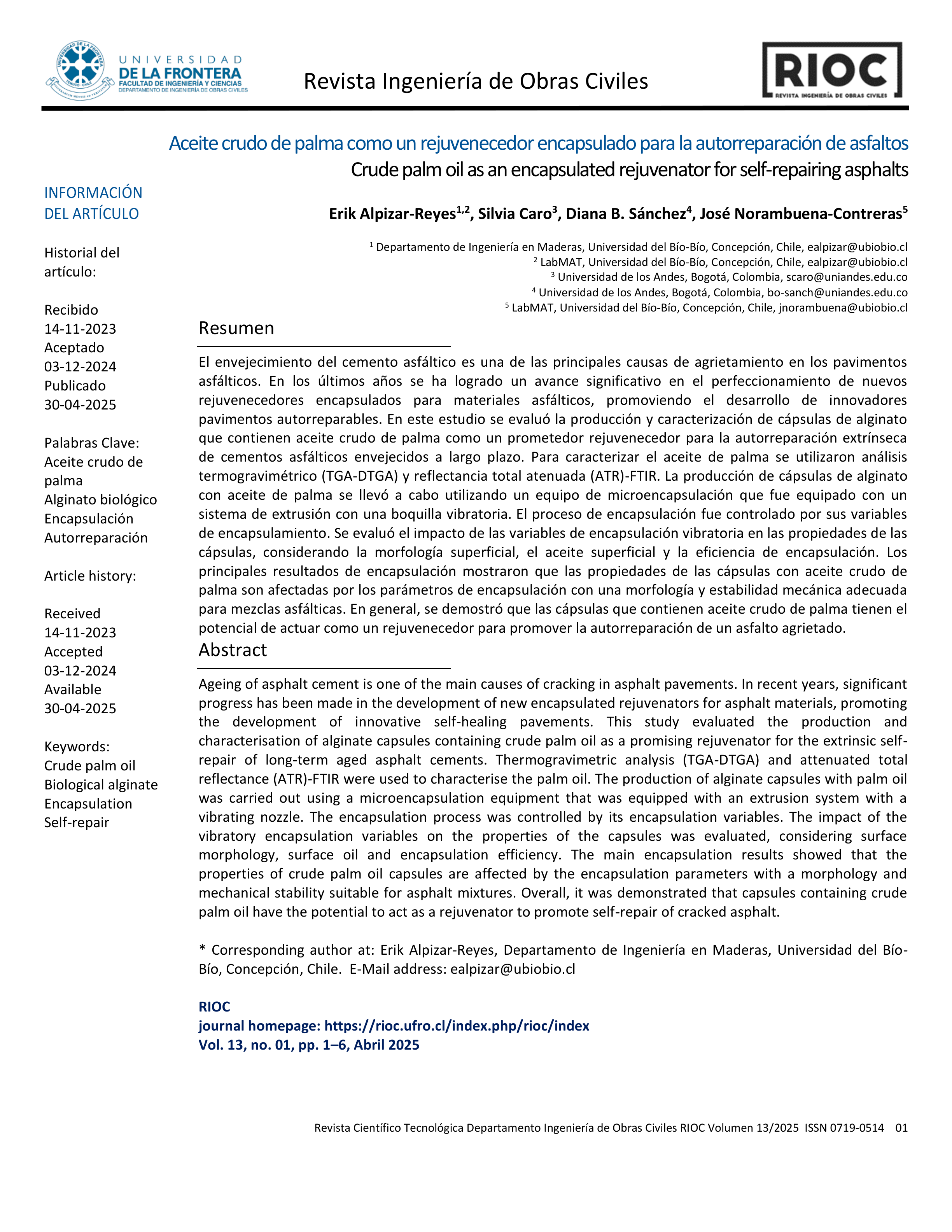Crude palm oil as an encapsulated rejuvenator for self-repairing asphalts
Keywords:
Crude palm oil, Biological alginate, Encapsulation, Self-repairAbstract
Ageing of asphalt cement is one of the main causes of cracking in asphalt pavements. In recent years, significant progress has been made in the development of new encapsulated rejuvenators for asphalt materials, promoting the development of innovative self-healing pavements. This study evaluated the production and characterisation of alginate capsules containing crude palm oil as a promising rejuvenator for the extrinsic self-repair of long-term aged asphalt cements. Thermogravimetric analysis (TGA-DTGA) and attenuated total reflectance (ATR)-FTIR were used to characterise the palm oil. The production of alginate capsules with palm oil was carried out using a microencapsulation equipment that was equipped with an extrusion system with a vibrating nozzle. The encapsulation process was controlled by its encapsulation variables. The impact of the vibratory encapsulation variables on the properties of the capsules was evaluated, considering surface morphology, surface oil and encapsulation efficiency. The main encapsulation results showed that the properties of crude palm oil capsules are affected by the encapsulation parameters with a morphology and mechanical stability suitable for asphalt mixtures. Overall, it was demonstrated that capsules containing crude palm oil have the potential to act as a rejuvenator to promote self-repair of cracked asphalt.
Downloads

Downloads
Published
How to Cite
Issue
Section
License
Copyright (c) 2025 Erik Alpizar-Reyes, Silvia Caro, Diana B. Sánchez, José Norambuena- Contreras

This work is licensed under a Creative Commons Attribution 4.0 International License.
The authors who publish in this journal accept the following conditions:
- The authors retain the copyright and assign to the magazine the right of the first publication, with the work registered with the Creative Commons attribution license, which allows third parties to use the published information whenever they mention the authorship of the work and the First publication in this journal.
- Authors may make other independent and additional contractual arrangements for non-exclusive distribution of the version of the article published in this journal (eg, include it in an institutional repository or publish it in a book) as long as it clearly indicates that the work Was first published in this magazine.
- Authors are encouraged and encouraged to publish their work on the Internet (for example, on institutional or personal pages) before and during the review and publication process, as it can lead to productive exchanges and a greater and faster dissemination of work Published (see The Effect of Open Access).







